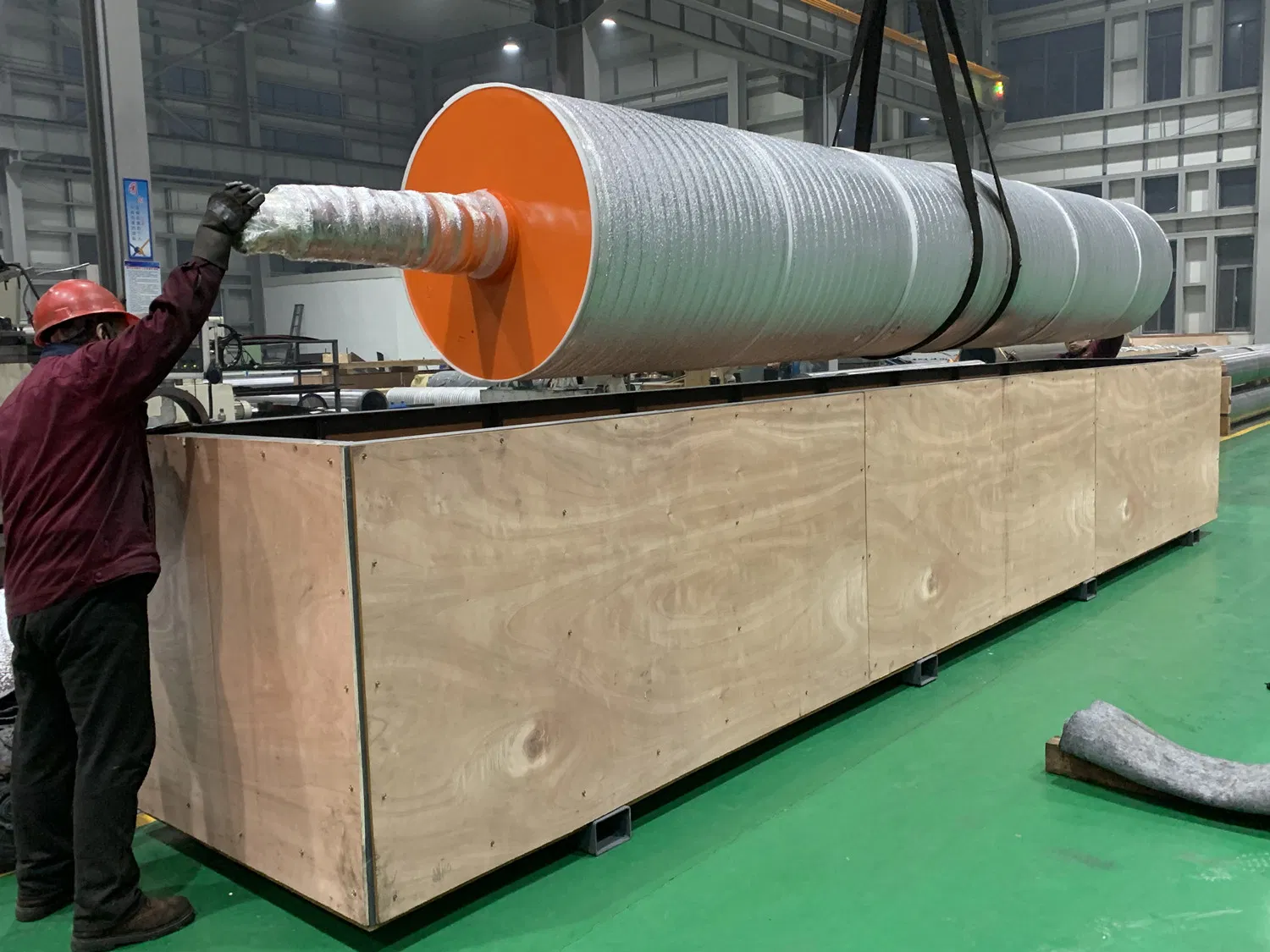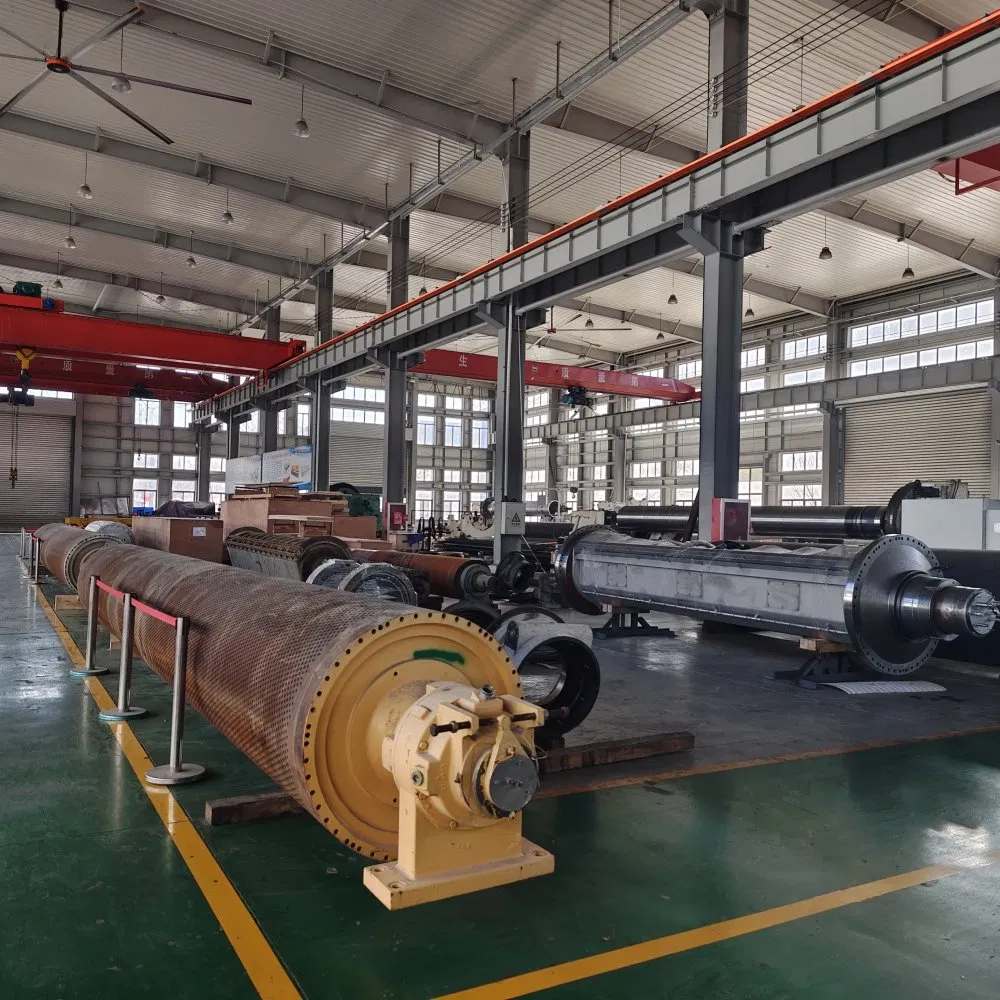In the intricate and high-speed world of papermaking, the press section stands as the heart of the operation. It’s where a fragile, wet web of fibers is transformed into a sturdy, uniform sheet. And at the core of this transformation, you'll often find a critical piece of engineering: the suction press roll. Have you ever wondered what truly separates a good paper machine from a great one? Often, the answer lies in the precision and reliability of its key components.
Frankly speaking, the performance of your suction press roll can make or break your production efficiency, paper quality, and ultimately, your bottom line. This isn't just another cylinder; it's a sophisticated system designed for one primary purpose—dewatering the paper sheet with unparalleled efficiency. As global manufacturing evolves, many mills are turning to the East, seeking a top-tier Suction Press Roll Supplier China to gain a competitive edge. This guide is designed to navigate that journey, providing you with the insights needed to forge a powerful and profitable partnership.
Understanding the Suction Press Roll: More Than Just a Cylinder
Before diving into supplier selection, it’s crucial to appreciate the complexity and importance of the suction press roll itself. Its primary job is to remove water from the paper sheet through a combination of mechanical pressure and vacuum suction. This dual-action process is far more effective than simple pressing alone, allowing for higher machine speeds and a drier sheet entering the dryer section, which in turn saves a tremendous amount of energy.
The Mechanics of Efficient Water Removal
Imagine a large, perforated cylindrical shell rotating at high speed. Inside this shell is a stationary vacuum box, or suction box, with seals that press against the inner surface of the rotating shell. As the wet paper sheet, sandwiched between two felts, passes over the roll, the vacuum inside the box pulls water from the sheet, through the felt, and into the perforations of the shell. This water is then collected and discharged. The combination of the nip pressure from a mating roll and this powerful vacuum effect results in a significant increase in sheet dryness.
It's worth noting that the design of the drilling pattern, the size of the holes, and the vacuum level are all meticulously calculated based on the paper grade, machine speed, and desired sheet properties. A one-size-fits-all approach simply doesn't work here.
Impact on Paper Quality and Machine Speed
The efficiency of the suction roll directly influences the final product. Proper dewatering leads to:
- Improved Sheet Strength: A well-pressed sheet has better fiber-to-fiber bonding.
- Reduced Sheet Breaks: A stronger, drier sheet is less likely to tear as it travels through the machine, especially critical for a high-speed paper machine suction roll.
- Better Surface Finish: Uniform water removal helps prevent blotchiness and improves printability.
- Increased Energy Efficiency: Every percentage point of water removed in the press section saves a significant amount of steam energy in the dryer section, which is the most energy-intensive part of the papermaking process.

Key Criteria for a Premier Suction Press Roll Supplier from China
Now that we've established the "why," let's focus on the "who." Selecting a supplier is a long-term commitment, not a one-time purchase. When evaluating a potential Suction Press Roll Supplier China, you need to look beyond the price tag and assess their capabilities holistically. In my experience, focusing on a few key areas can reveal the true quality of a potential partner.
Technical Expertise and R&D Capabilities
A top-tier supplier isn't just a fabricator; they are an engineering partner. They should possess a deep understanding of paper machine dynamics. Look for a team of engineers who can:
- Analyze Your Needs: They should ask detailed questions about your machine type, paper grades, operating speeds, and current challenges.
- Offer Custom Solutions: They should be able to design a roll optimized for your specific application, including custom drilling patterns and internal suction box configurations.
- Demonstrate Innovation: Ask about their R&D efforts. Are they working on new materials, better seal designs, or more efficient internal mechanics? This shows a commitment to advancing the technology, not just replicating old designs.
Material Science: The Heart of Durability
The choice of suction roll shell material is perhaps the most critical decision affecting the roll's lifespan and performance. The shell must withstand immense mechanical stress, a corrosive environment (due to water, chemicals, and pH variations), and fatigue from continuous rotation. The main options include:
- Bronze: A traditional choice, known for good corrosion resistance in certain conditions. However, it's softer and may not be suitable for very high-speed or high-load applications.
- Stainless Steel (e.g., 304, 316L): Offers better strength and general corrosion resistance than bronze.
- Duplex Stainless Steel: This is often the premium choice for modern, high-performance machines. Duplex steels offer a superior combination of high strength (resisting deformation and fatigue) and excellent corrosion resistance, particularly against chloride-induced stress corrosion cracking, which is a common failure mode for suction rolls.
A knowledgeable supplier will guide you through these options, explaining the trade-offs and recommending the best material for your specific mill's water chemistry and operating parameters.
Manufacturing Precision and Quality Control
The most brilliant design is useless if it isn't manufactured with absolute precision. This is where you separate the experts from the amateurs. Key manufacturing processes to inquire about include:
- Advanced Machining: Do they use modern, multi-axis CNC machines for drilling and grooving? This ensures uniformity and accuracy, which is critical for sheet quality and felt life.
- Dynamic Balancing: For high-speed operation, the roll must be perfectly balanced to prevent vibration. Ask about their balancing standards (e.g., ISO G1.0 or G2.5) and their balancing equipment.
- Non-Destructive Testing (NDT): A reputable supplier will perform rigorous NDT on the shell casting/forging and after drilling to detect any subsurface flaws that could lead to catastrophic failure. This includes ultrasonic testing and dye penetrant tests.
- Quality Certifications: Look for certifications like ISO 9001, which indicates a structured quality management system is in place.

Navigating the Partnership: Tips for a Smooth Collaboration
Once you've shortlisted potential suppliers based on their technical and manufacturing capabilities, the next step is to ensure a smooth and successful partnership. Interestingly enough, many challenges arise not from technical failures, but from communication gaps and logistical misunderstandings.
Effective Communication and Specification Clarity
To get the right product, you must provide the right information. Don't leave anything to interpretation. Your technical package to a potential supplier should be as detailed as possible.
- Provide Detailed Drawings: If you are replacing an existing roll, provide the original manufacturer's drawings if possible.
- Define Operating Parameters: Clearly state the machine speed, nip loading (in PLI or kN/m), paper grades, and typical pH/chemical composition of your white water.
- Establish a Communication Channel: Designate a single point of contact on both sides to streamline communication and ensure that technical queries are answered promptly by qualified personnel.
Understanding Logistics and Shipping
A suction press roll is a massive, heavy, and delicate piece of equipment. Shipping it halfway around the world requires careful planning.
- Packaging: Discuss the packaging method in detail. The roll should be securely crated in a custom-built, seaworthy wooden box with proper internal supports and corrosion protection for the long journey.
- Shipping Terms: Understand the Incoterms being used (e.g., FOB, CIF). This defines who is responsible for the goods at each stage of the shipping process, including insurance.
- Lead Time: Be realistic about production and shipping timelines. A high-quality, custom-built suction roll takes months to manufacture. A reliable supplier will give you a clear and honest production schedule.
Conclusion: Your Partner for Papermaking Excellence
Choosing a suction press roll is a decision that will impact your mill's performance for years, even decades. It’s an investment in productivity, quality, and efficiency. By moving beyond a simple price comparison and focusing on technical expertise, material quality, manufacturing precision, and after-sales support, you can identify a truly elite partner. The right Suction Press Roll Supplier China will not just sell you a component; they will provide a cornerstone for your production success, helping you to run faster, save energy, and produce a superior product. The journey to finding that partner requires diligence, but the rewards are well worth the effort.
For more detailed information, please visit our official website:Suction Press Roll Supplier China
About the author: David Chen is a senior process engineer with over 20 years of experience in the pulp and paper industry. Specializing in paper machine optimization and press section efficiency, he has consulted for mills across Asia and Europe. David is passionate about bridging the gap between advanced component manufacturing and practical, on-the-floor paper production improvements. He frequently writes about industrial engineering best practices and supplier relationship management.


